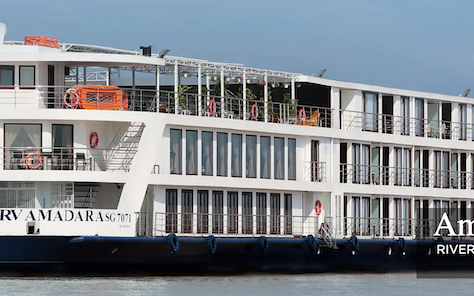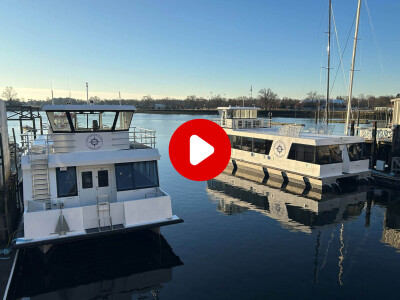We were on an eight-day, seven-night cruise on the Mekong River in Vietnam and Cambodia recently when, approaching our final stop, Kampong Cham in Cambodia, when the trip went sideways. The schedule called for a late afternoon visit to a neighboring temple before dinner and spending the night. We were to disembark the following morning to drive to Siem Reap.
My wife and I were in our cabin relaxing before the afternoon tour when we sensed that our cruise ship, the AmaDara, had hit bottom. But the ship continued to maneuver toward shore where we were scheduled to exit. We noticed that in our port-side cabin we had to walk uphill to our door. Our bathroom door was largely closed because of the ship’s listing.
It wasn’t until we went to our meeting place for the pre-tour briefing that we discovered that we were not at a docking station. We were told that there were two other river cruise ships occupying the docks, so we had to go to the alternative docking station.
The vessel was perpendicular to the shore but quite a distance away. We watched the crew talking and then our tour guides. We were stuck. Nobody seemed sure what to do next.
By stuck, I mean stuck. When we went to the bow, we could see that we were stuck in the mud of the shoreline. There were mud flats to our port side and shallow water to our starboard side. The captain was trying to back the ship off the mud flats but to no avail. When we walked by the wheelhouse, there were no smiling faces.
A small wooden boat that assists ships in docking was off our bow. The problem was that there was a very strong wind blowing on the starboard side. If you are familiar with river cruise ships, they are narrow and tall. That meant the stiff wind was probably pushing us farther into the mud flats. The little wooden boat took a line from the ship and tried to pull us off from the starboard side, but he was working against the wind pushing us into the mud flats. That effort didn’t go very far.
Plan A didn’t work. Time for Plan B. One of the cruise ships docked ahead came down. The little wooden boat took a line from our port stern to the Mekong Jewel. After fastening the line – a distance of roughly 200’ – she tried pulling upriver as our ship put its engine in reverse.
We were standing on the stern watching the effort. As the Mekong Jewel pulled, the line popped loose. So much for Plan B. On to Plan C. The Mekong Jewel repositioned itself and the wooden boat brought the line back. This time, the line was secured to our starboard stern cleat. After pulling and pulling, and the AmaDara revving up its engines, there was still no movement. The Mekong Jewel disconnected and left.
We are waiting to hear the details about Plan D. Not surprisingly, the captain was not present at the captain’s farewell cocktail party. We suspect this will be a huge black mark on his performance evaluation. The message we got was: “We are working on options and will keep you informed.”




.jpg.small.400x400.jpg)
